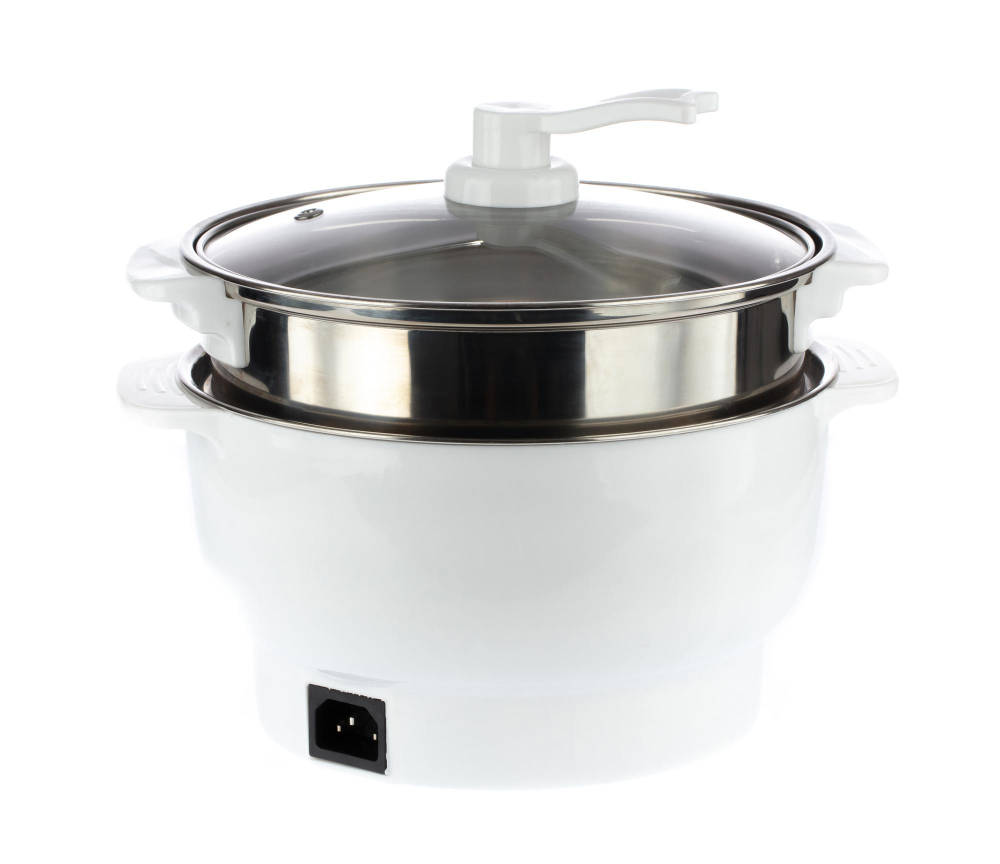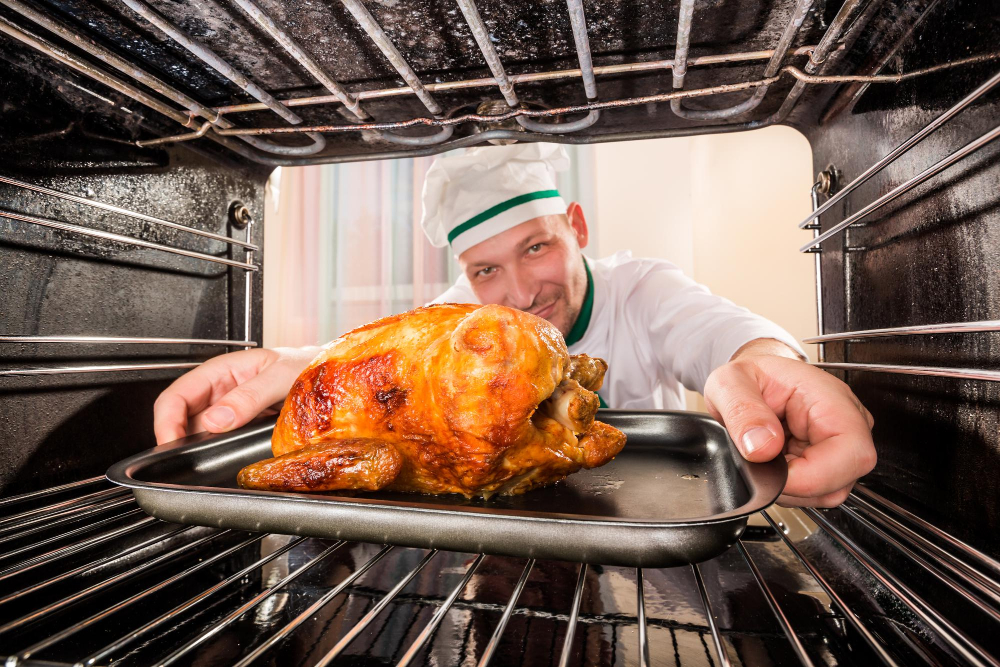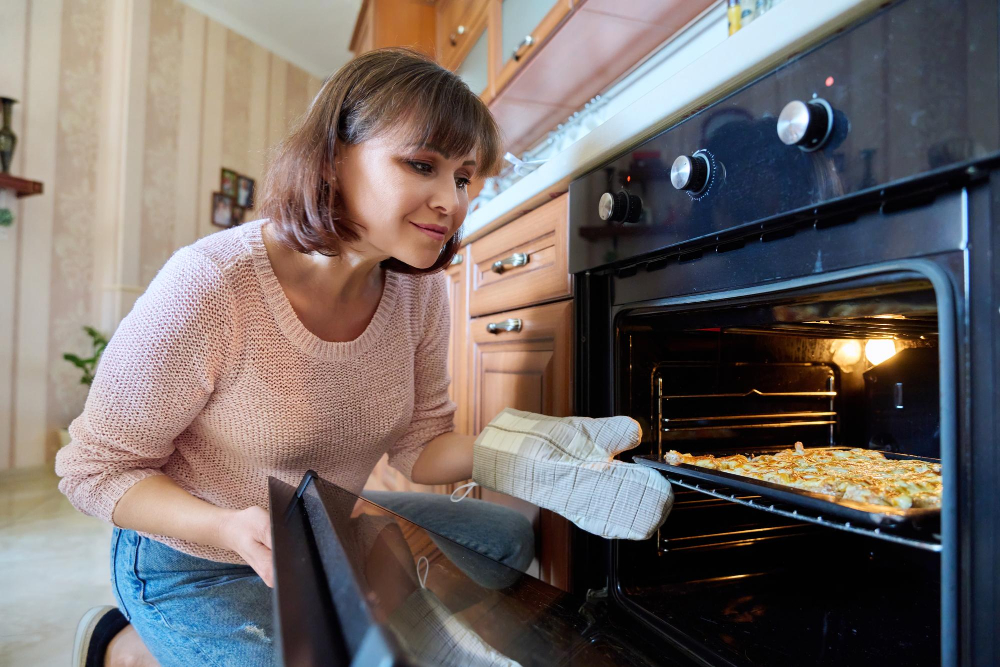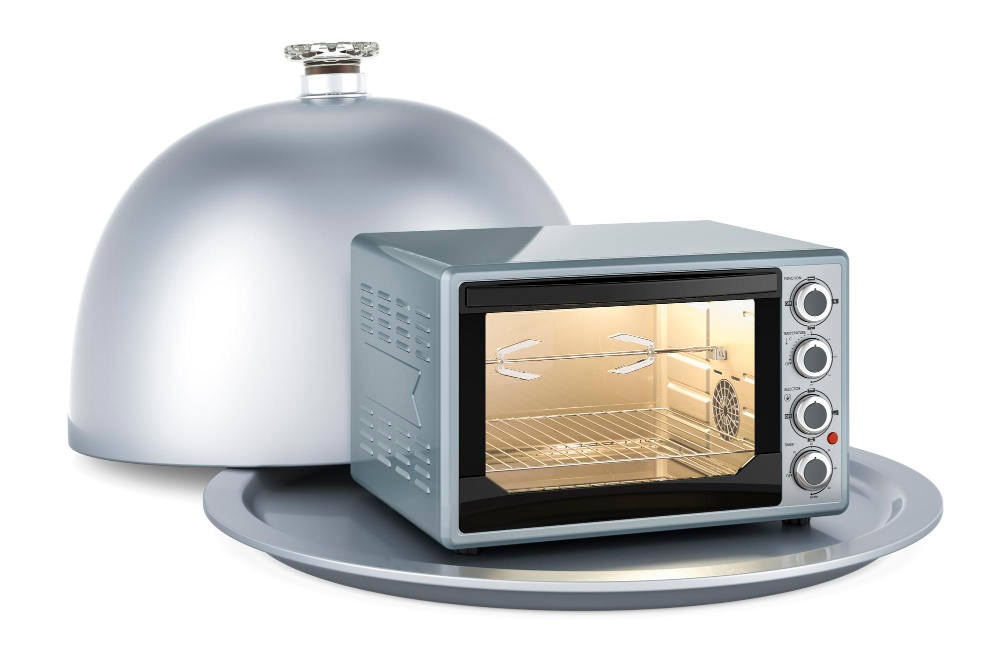Last updated on
Discover various Dutch oven alternatives as we explore versatile cookware options to enhance your culinary experience in the kitchen.
Are you tired of using the same old pots and pans for your cooking? Have you ever considered using a Dutch oven, but found it too expensive or bulky? Fear not, my fellow home chefs! In this article, we will explore some alternative options to the traditional Dutch oven that are both budget-friendly and space-saving. From cast iron skillets to slow cookers, we’ll show you how to achieve that delicious Dutch oven flavor without breaking the bank or sacrificing precious counter space.
So grab your apron and let’s get cooking!
Cast Iron Skillets

Cast Iron Skillets are a versatile and budget-friendly alternative to Dutch ovens. They can be used for baking, frying, sautéing, and even roasting.
Cast iron skillets distribute heat evenly and retain it well, making them perfect for slow-cooking stews or braising meats.
To use a cast iron skillet as an alternative to a Dutch oven, simply follow the same recipe instructions but adjust the cooking time accordingly since cast iron heats up faster than traditional Dutch ovens. You may need to add more liquid during cooking since cast iron skillets tend to evaporate moisture more quickly.
One of the best things about using a cast-iron skillet is that they are incredibly durable and long-lasting if properly cared for. With proper seasoning (coating with oil) after each use and avoiding harsh detergents or abrasive scrubbers when cleaning them will ensure your skillet lasts many years in your kitchen arsenal.
Oven-Proof Skillet Substitute
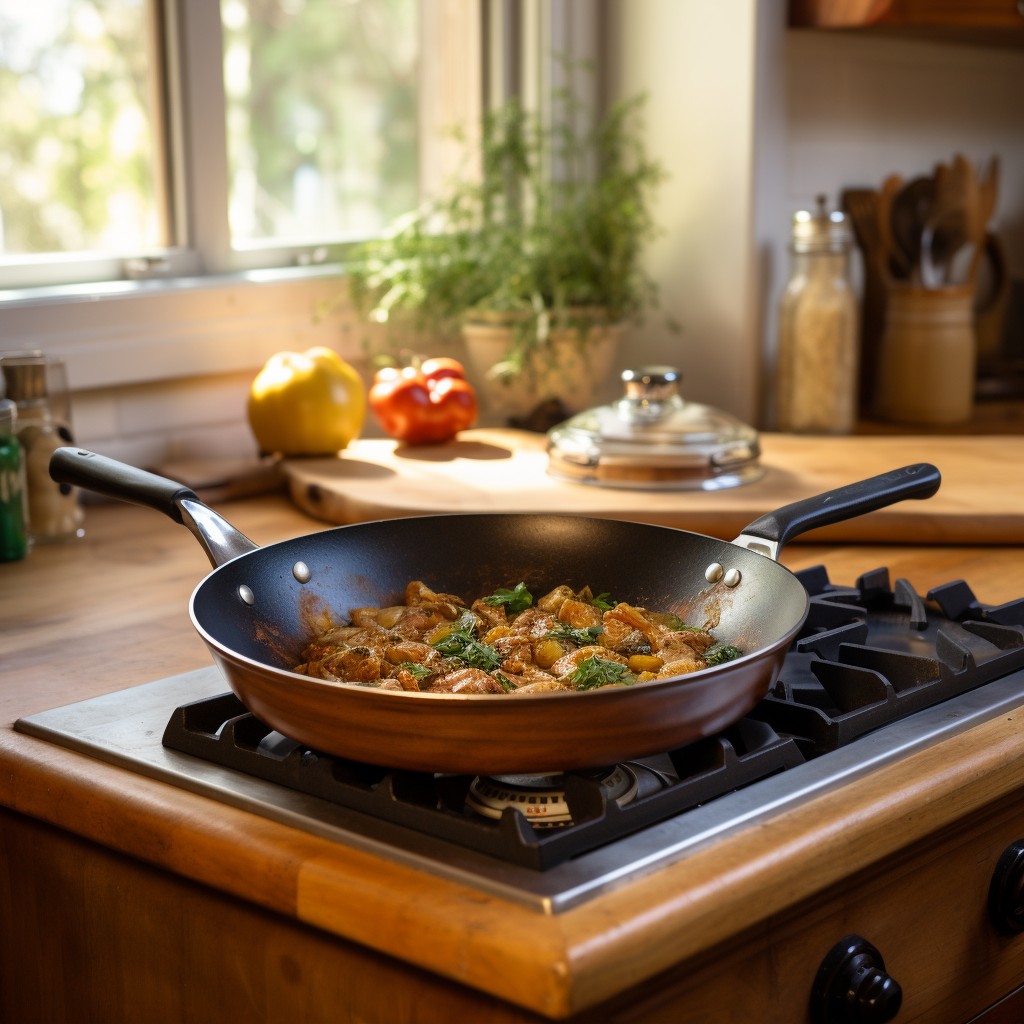
Cast iron skillets are perfect for this purpose because they retain heat well and distribute it evenly. They’re also versatile enough to go from stovetop to oven without any issues.
To use your cast iron skillet as an alternative to the Dutch oven, start by preheating your oven according to the recipe instructions. Then, simply cook your ingredients in the skillet on medium-high heat until they’re browned or cooked through.
Once you’ve finished cooking on the stovetop, transfer your cast iron skillet directly into the preheated oven and bake until done. This method works particularly well for dishes like casseroles or baked pasta that require both stove-top browning and baking in one dish.
Deep Skillet Substitute
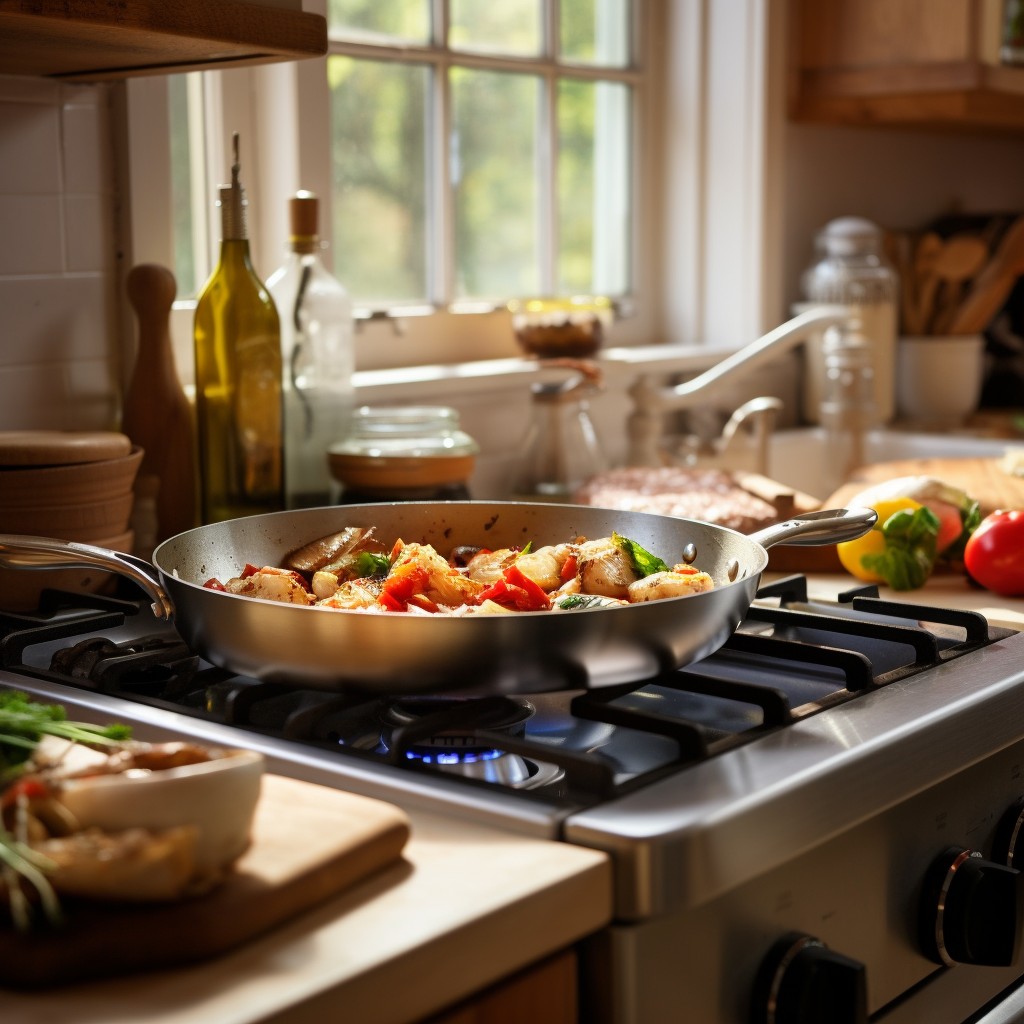
A deep skillet is perfect for dishes that require both stovetop and oven cooking, such as casseroles or baked pasta dishes.
When choosing a deep skillet substitute, look for one with an oven-safe handle and lid. This will allow you to easily transfer your dish from the stovetop to the oven without having to switch pans.
One of the benefits of using a deep skillet instead of traditional Dutch ovens is its versatility in terms of size and shape options available on the market. You can find them in various sizes ranging from 8 inches up to 16 inches in diameter.
They are often made with non-stick surfaces which make cleaning up after cooking much easier than cast iron alternatives.
Stainless Steel Pots
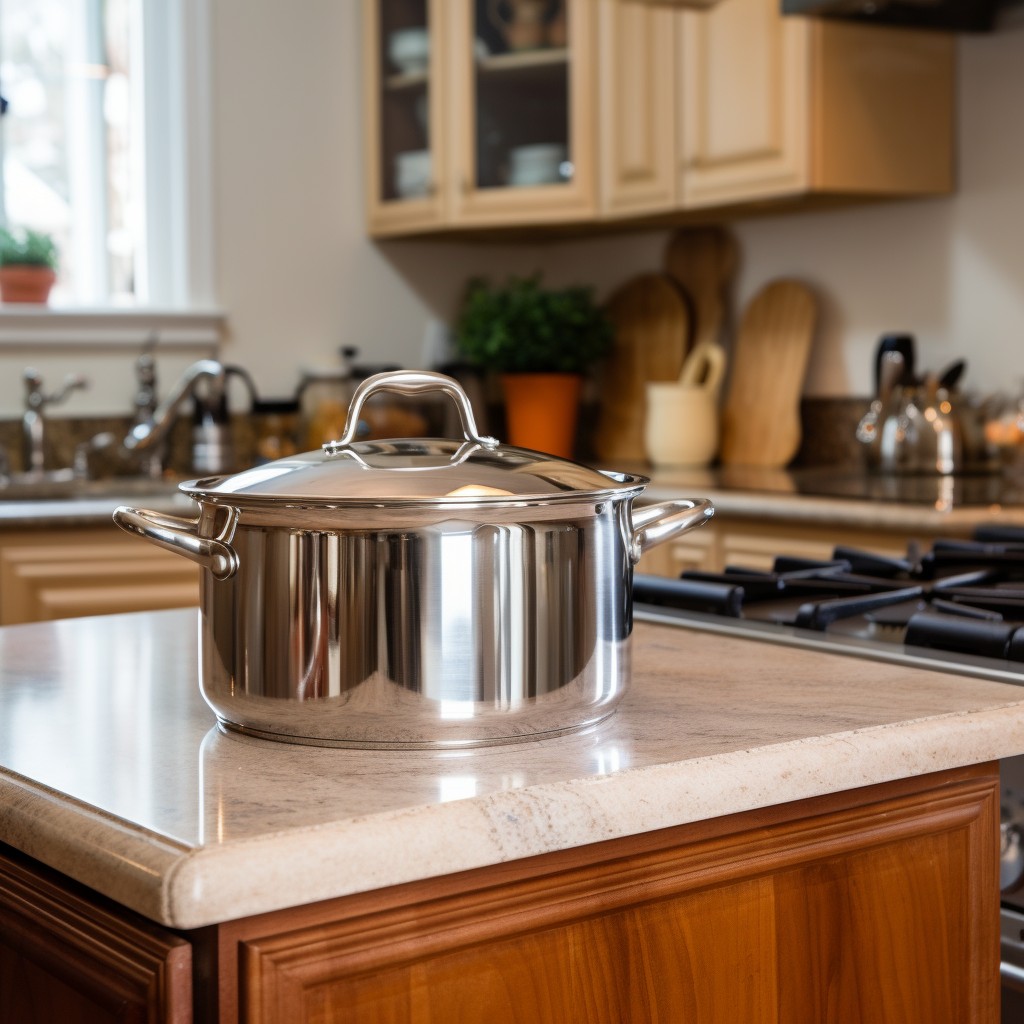
They come in various sizes and shapes, making them versatile enough for different cooking needs. Stainless steel pots are also oven-safe, which means they can be used in the same way as Dutch ovens when it comes to baking or roasting.
One of the benefits of using stainless steel pots is their durability. They don’t chip or scratch easily like other materials such as ceramic or enamel-coated cast iron.
This makes them ideal for everyday use without worrying about damaging your cookware.
Another advantage is that stainless steel doesn’t react with acidic foods like tomatoes or citrus fruits, unlike cast iron which can sometimes impart a metallic taste into your dishes.
When choosing a stainless steel pot as an alternative to a Dutch oven, look for one with thick walls and base since this will help distribute heat evenly throughout the pot while cooking. Make sure it has sturdy handles that won’t get hot during use so you can safely move it around on the stove top or from oven-to-table without burning yourself.
Stock Pot Comparison

These pots are typically made from stainless steel and come with tight-fitting lids to keep your food warm and flavorful. They also have tall sides to prevent spills while stirring or transferring liquids.
When compared to Dutch ovens, stock pots tend to be lighter in weight and easier to maneuver on the stove top. They also come in larger sizes than most Dutch ovens which makes them ideal for cooking big family meals or hosting dinner parties.
One downside of using a stock pot is that they don’t retain heat as well as cast iron cookware like the traditional Dutch oven does. This means you may need more time on the stove top when cooking certain dishes such as stews or braises.
French Oven

It has a wider base and lower sides, which makes it perfect for cooking stews, soups, and casseroles. The lid of the French oven also has spikes on the underside that help to distribute moisture evenly throughout the dish while it cooks.
While both Dutch ovens and French ovens are made from cast iron or ceramic materials, they differ in their shape and size. A Dutch oven typically has higher sides than a French one does; this means you can use it for baking bread or roasting meat as well as making stews.
Dutch Oven Vs. French Oven
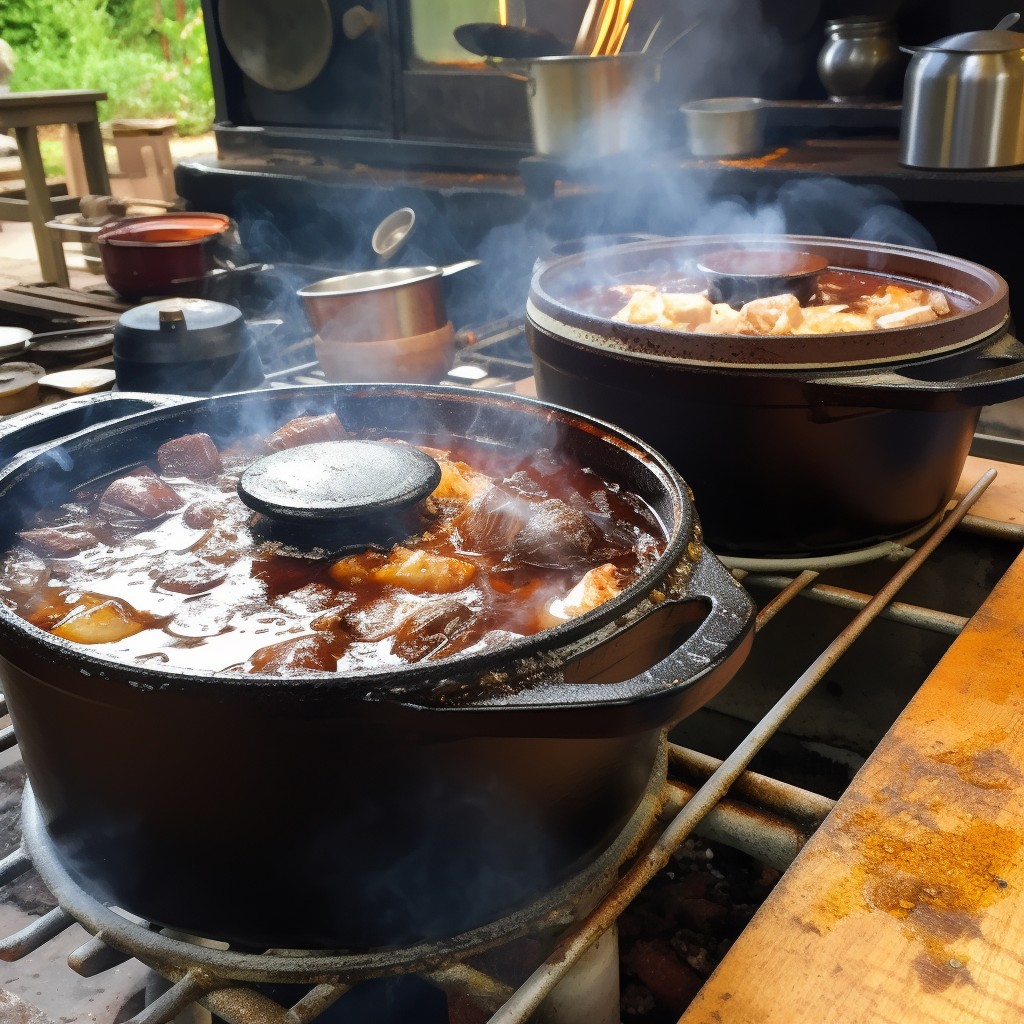
However, there are some key differences between the two that may affect your cooking preferences.
While both types of cookware have thick walls and lids for even heat distribution and retention, French ovens typically have a more decorative exterior with enamel coating in various colors. This makes them an attractive addition to any kitchen or dining table.
On the other hand, Dutch ovens usually come in plain cast iron or stainless steel finishes which can be less visually appealing but more durable over time. They also tend to be heavier than French ovens due to their thicker walls.
When it comes down to cooking performance though, both types of cookware excel at slow-cooking stews and braises as well as baking breads thanks to their ability retain heat evenly throughout the pot’s surface area.
Ultimately choosing between a Dutch oven vs.
Slow Cookers

These handy kitchen appliances allow you to set it and forget it, making them perfect for busy weeknights or lazy weekends. Slow cookers come in various sizes and shapes, so finding one that fits your needs shouldn’t be too difficult.
One of the best things about slow cookers is their versatility. You can use them to make soups, stews, roasts – even desserts! Plus they’re energy-efficient since they don’t require constant attention like traditional cooking methods do.
When shopping for a slow cooker as a Dutch oven substitute look out for features such as programmable settings (so you can set the cooking time), removable inserts (for easy cleaning), and temperature control options (to ensure your food cooks evenly).
Crock-Pot
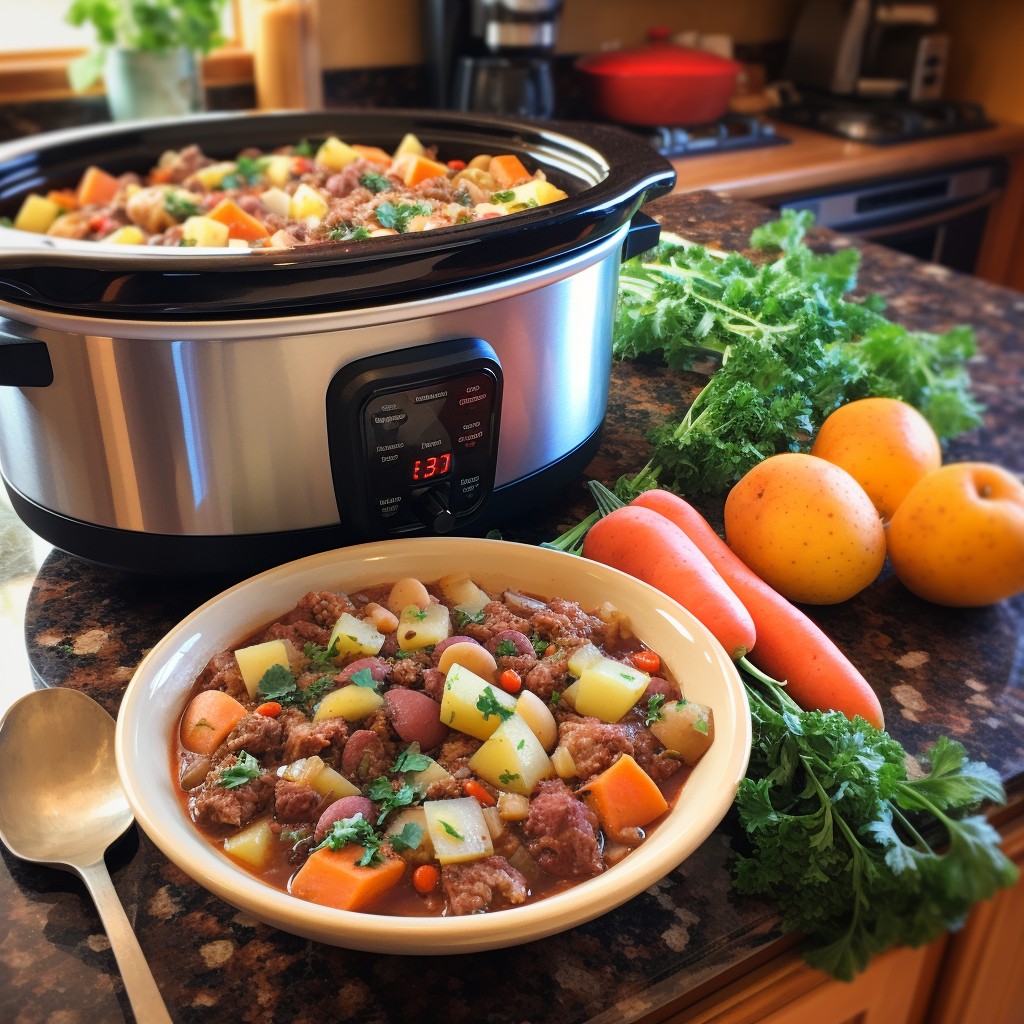
It’s perfect for slow-cooking stews, soups, and roasts. The beauty of using a Crock-Pot is that you can set it up in the morning before work or school and come home to a delicious meal ready to be served.
One advantage of using a Crock-Pot over traditional Dutch ovens is its portability. You can easily take it with you on camping trips or potlucks without worrying about breaking your expensive cookware.
Another benefit of using this appliance is that it uses less energy than an oven or stove-top cooking method, making it more eco-friendly and cost-effective in the long run.
When choosing your Crock-Pot, look for one with adjustable temperature settings so you can control how quickly your food cooks. Also consider purchasing one with removable inserts for easy cleaning after use.
Instant Pot
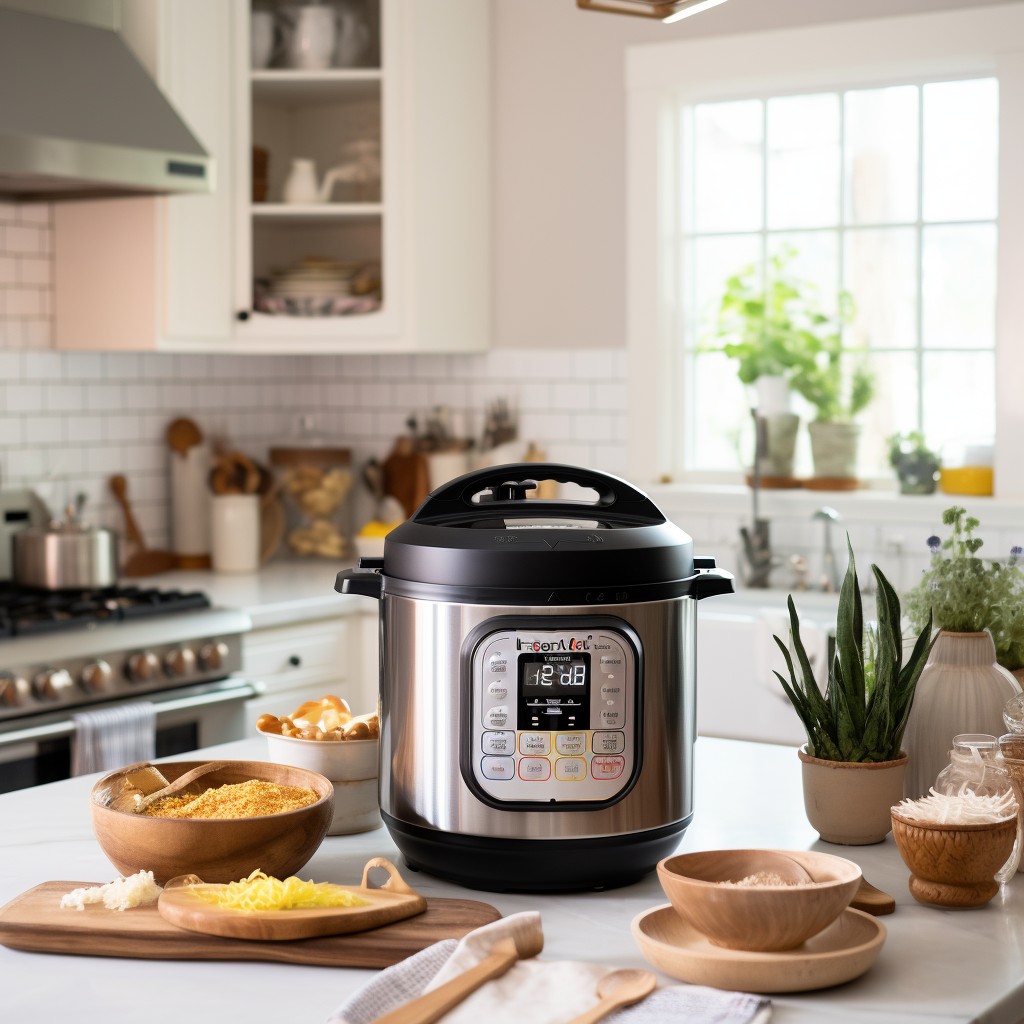
It’s perfect for those who want to cook meals quickly and efficiently without sacrificing flavor. This multicooker option has several functions, including pressure cooking, slow cooking, sautéing, steaming and more.
With the Instant Pot’s ability to cook food up to 70% faster than traditional methods while retaining moisture and nutrients in your dishes makes it a great choice for busy home chefs.
One of the best things about using an Instant Pot is its convenience factor – you can set it up before leaving for work or running errands in the morning and come back home later with dinner ready! Plus, there are countless recipes available online specifically designed for this appliance.
Multicooker Option
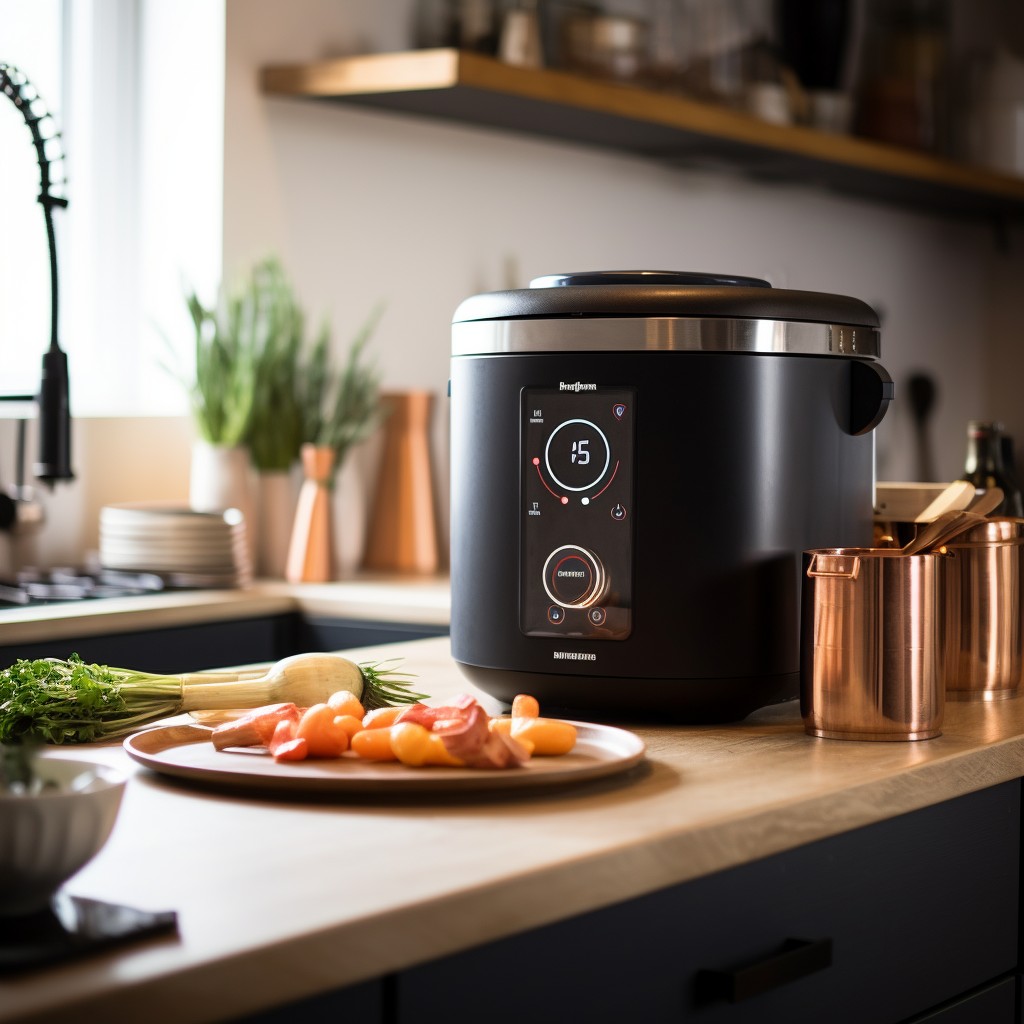
These appliances can pressure cook, slow cook, sauté, steam and even bake all in one pot. They come with various settings that allow you to prepare different types of dishes with ease.
One of the most popular brands is Instant Pot which has become synonymous with multicookers. It’s an electric appliance that combines several kitchen gadgets into one compact unit.
With its stainless steel inner pot and multiple cooking functions including pressure cooking, slow cooking and rice making among others; it’s no wonder why many home chefs have made this their go-to kitchen tool.
The Instant Pot also comes in different sizes ranging from 3 quarts up to 8 quarts depending on your needs or family size. Plus it has safety features such as automatic temperature control which makes it easy for beginners who are new to using pressure cookers.
Pressure Cooker
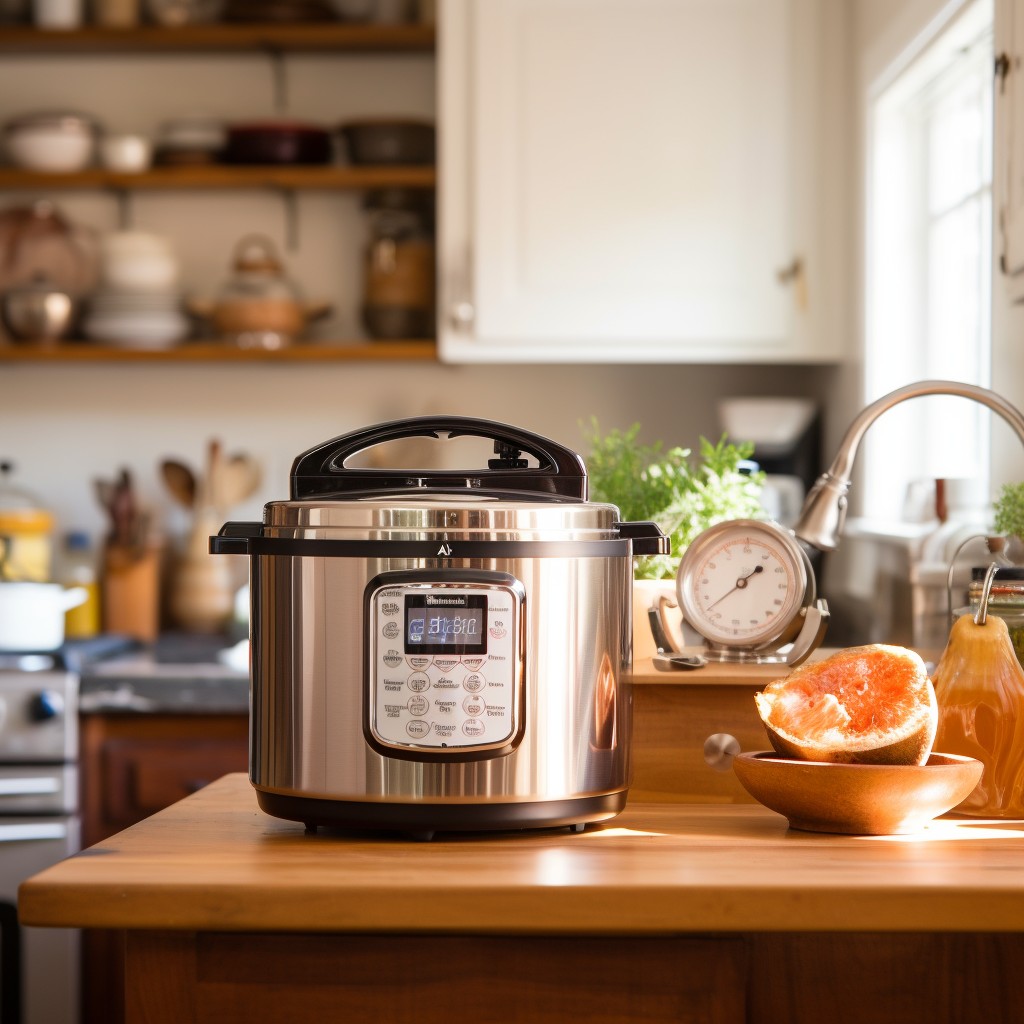
This versatile appliance uses steam to cook food quickly and efficiently, making it perfect for busy weeknights or last-minute dinner parties.
One of the biggest advantages of using a pressure cooker is its ability to tenderize tough cuts of meat in just minutes. With traditional cooking methods, these meats would require hours on low heat to become fork-tender.
But with a pressure cooker, you can achieve similar results in under an hour.
Another benefit is that it retains more nutrients than other cooking methods because the high-pressure environment doesn’t allow them to escape as easily. Plus, since everything cooks together inside one pot (just like with Dutch ovens), there’s less cleanup involved.
Electric Dutch Oven

These appliances are designed to mimic the cooking style of traditional Dutch ovens but with added features such as temperature control and automatic shut-off. They come in various sizes, making them ideal for both small and large families.
One of the benefits of using an electric Dutch oven is that it eliminates the need to monitor your food constantly while it cooks. You can set your desired temperature or cooking time, then walk away until it’s done! This makes meal prep much easier when you have other tasks to attend to.
Another advantage is that they don’t require any seasoning like cast iron pots do. Plus, they’re easy to clean since most models come with removable inserts that can be washed separately from their base unit.
Air Fryer Alternative
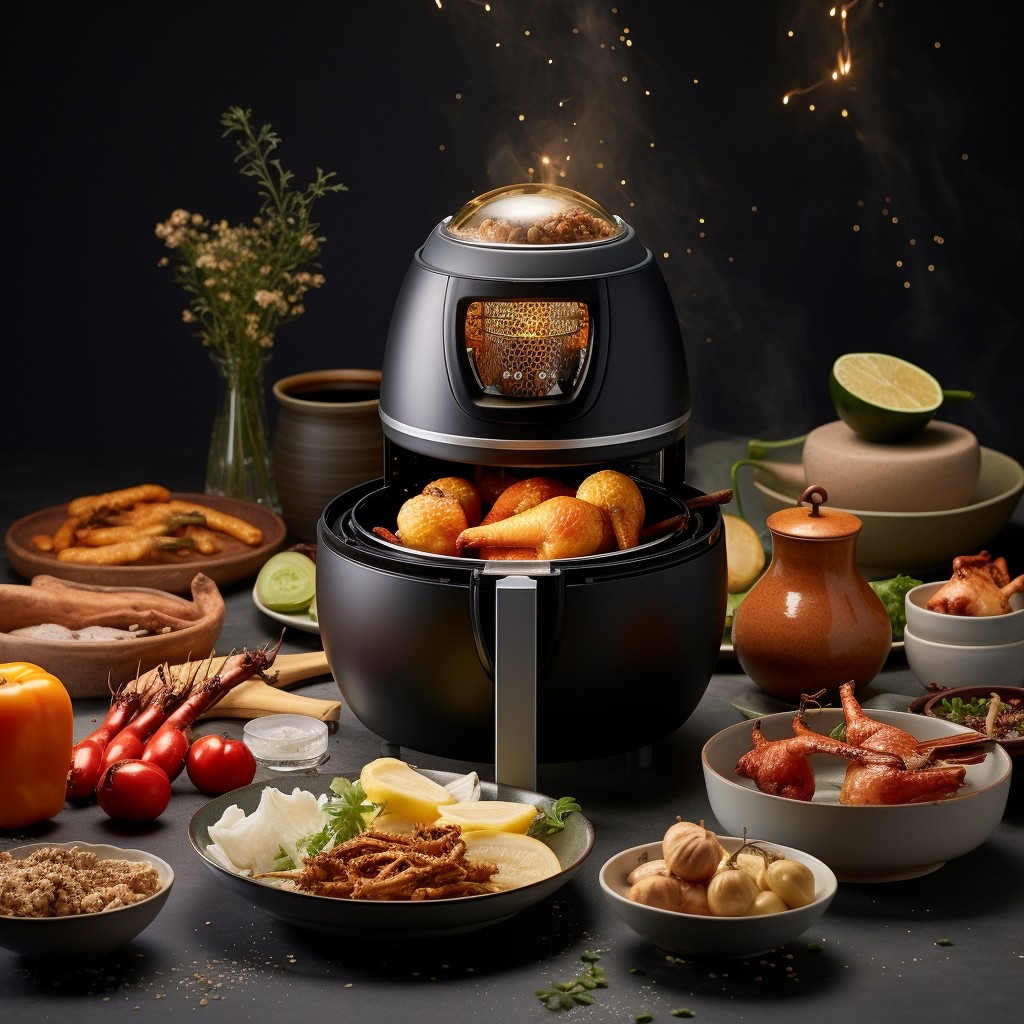
However, if you don’t have the budget or space for one of these trendy appliances, fear not! You can achieve similar results with a convection oven. A convection oven circulates hot air around the food to create that crispy texture we all love without using as much oil as traditional frying methods.
To use this method as an alternative to Dutch ovens, simply place your ingredients in a baking dish and set it in the preheated convection oven. The circulating hot air will cook everything evenly and give it that delicious golden-brown finish.
Roasting Pan

These pans are typically made from heavy-duty materials like stainless steel or cast iron and come with high sides to prevent any juices from spilling over. Roasting pans also often come with racks that elevate the food off the bottom of the pan, allowing hot air to circulate around it for even cooking.
While they may not be as versatile as Dutch ovens when it comes to stovetop cooking, roasting pans excel in their ability to roast large cuts of meat like whole chickens or turkeys. They’re also great for making roasted vegetables and other side dishes.
When shopping for a roasting pan, look for one that’s big enough to accommodate your largest piece of meat while still fitting comfortably in your oven. You’ll want one with sturdy handles on either end so you can easily move it in and out of the oven without burning yourself.
Tagine Cookware
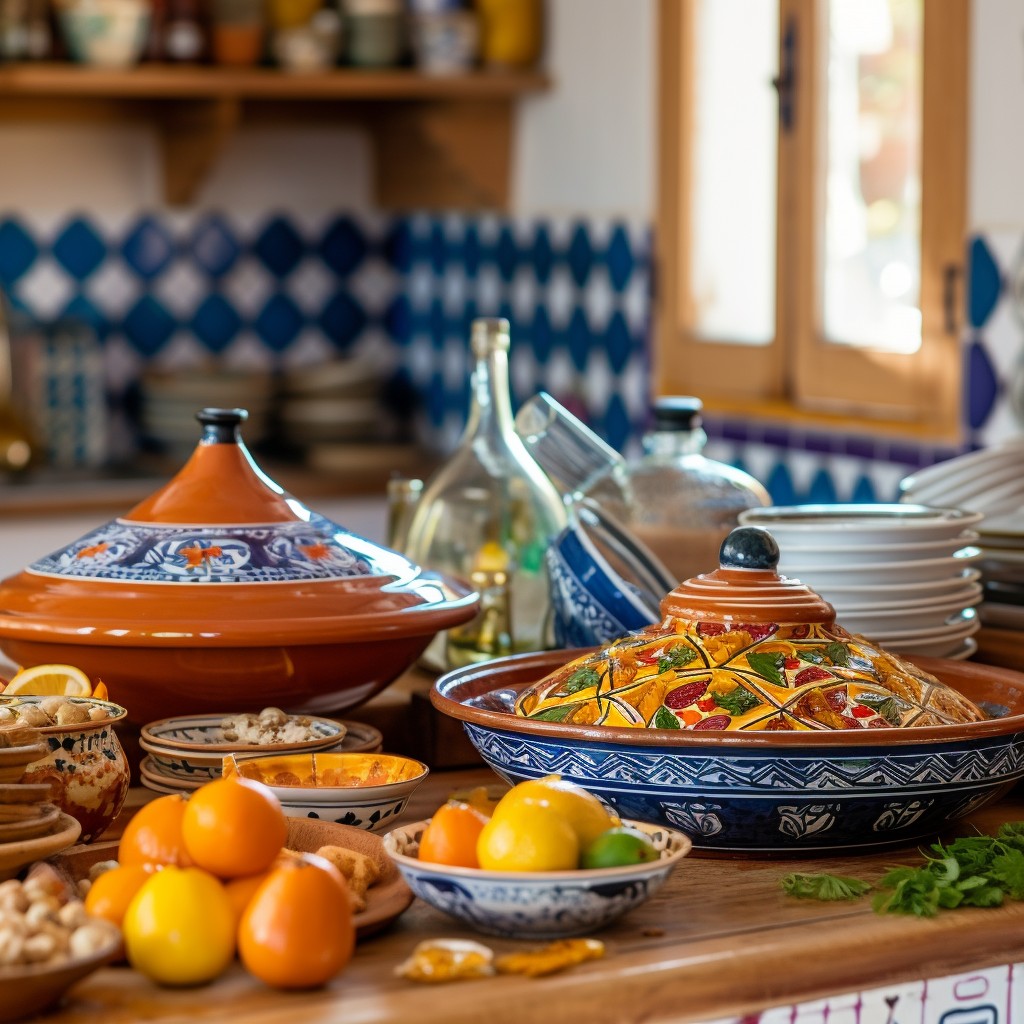
This traditional Moroccan cooking vessel is made of clay and has a distinctive cone-shaped lid that helps to circulate steam and keep food moist while it cooks. The result is tender, flavorful dishes that are perfect for sharing with family or friends.
While the tagine may not be as versatile as some other Dutch oven alternatives on this list, it’s an excellent choice if you want to experiment with new flavors and cooking techniques. You can use it to make everything from stews and soups to roasted meats or vegetables.
One thing worth noting about the tagine is that it requires special care when cleaning due to its porous nature. It’s best washed by hand in warm water without soap so as not damage its seasoning layer which develops over time through repeated use.
Dutch Oven Vs. Tagine Pot
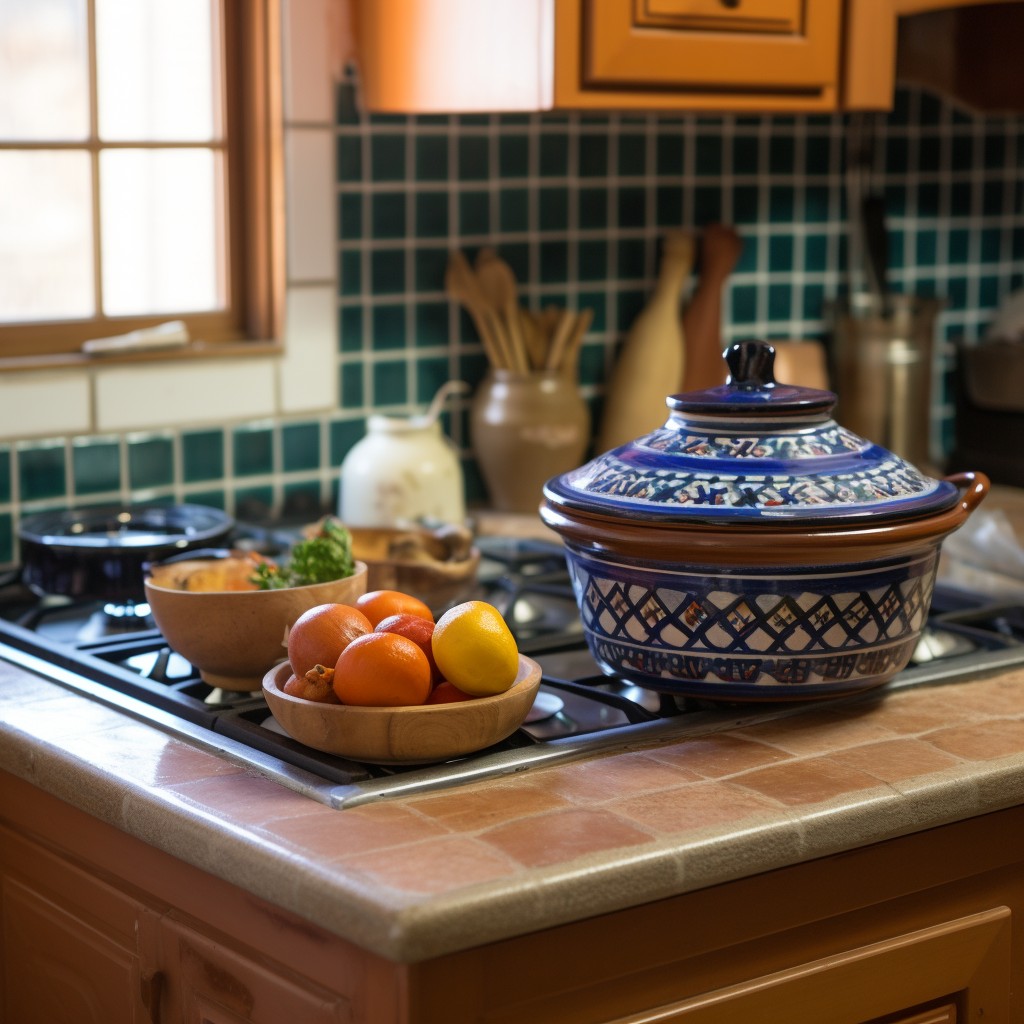
This traditional North African cooking vessel is made of clay and has a distinctive cone-shaped lid that helps to trap steam and circulate heat evenly. But how does it compare to the Dutch oven?
While both pots are great for slow-cooking stews, soups, and braises, they have some key differences. The tagine’s conical shape allows moisture to condense on the lid before dripping back down onto the food inside – this results in tender meat with intense flavors.
On the other hand, Dutch ovens have thicker walls which retain heat better than their Moroccan counterparts; this makes them ideal for baking bread or roasting meats at high temperatures.
Casserole Dish
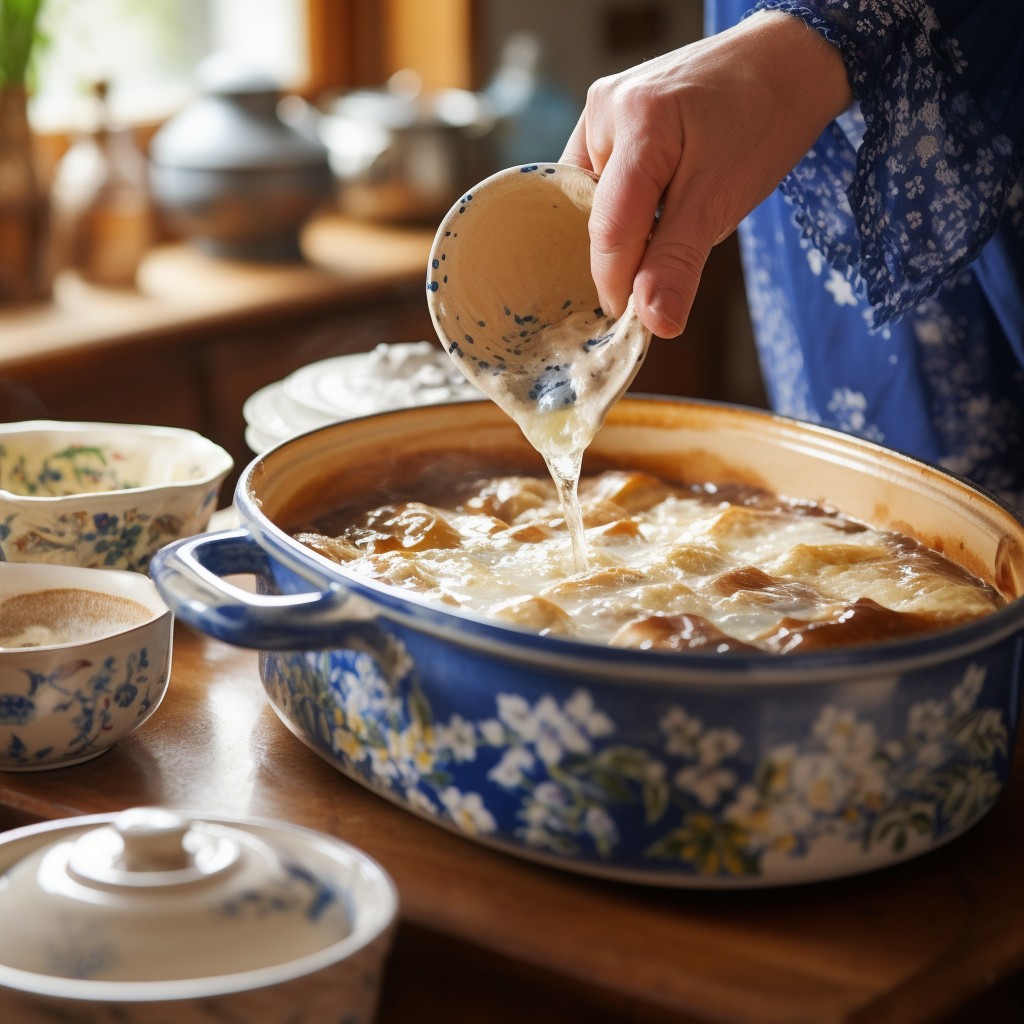
These dishes come in various sizes and shapes, making them perfect for cooking everything from casseroles to stews. They are typically made of glass or ceramic material that can withstand high temperatures in the oven.
One advantage of using a casserole dish is its ability to distribute heat evenly throughout your food while retaining moisture. This makes it an excellent option for slow-cooking recipes that require long hours in the oven.
Another benefit is their affordability compared to Dutch ovens, which can be quite expensive depending on their size and brand. Casserole dishes are also easier to store due to their flat shape compared with bulky Dutch ovens.
Clay Pot Cookware
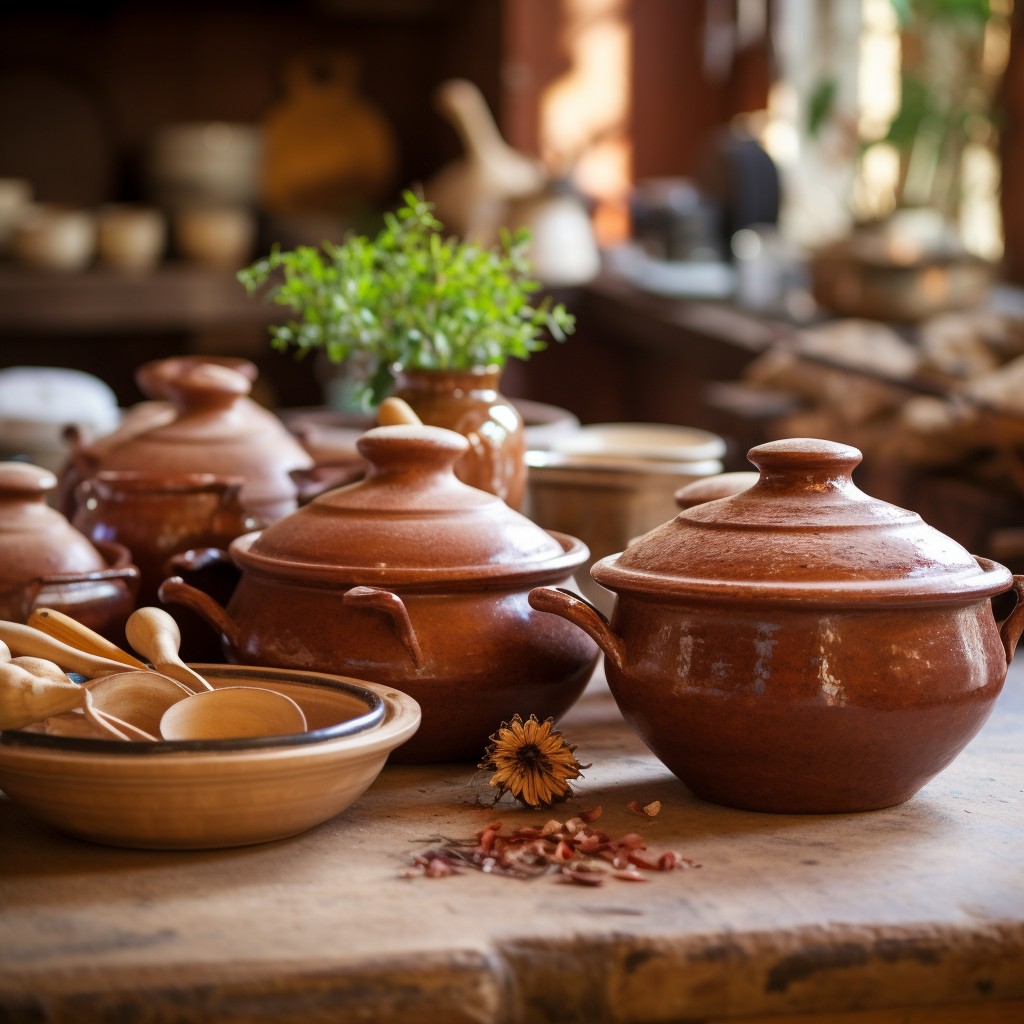
These pots are made from porous clay that allows steam to escape during the cooking process, resulting in tender and juicy meats with rich flavors.
One of the most popular types of clay pot cookware is the tagine. This North African dish features a cone-shaped lid that helps circulate moisture back into the food as it cooks.
The result is succulent meat dishes with aromatic spices and vegetables.
Another type of clay pot cookware is called an earthen casserole dish or Römertopf (German for “Roman Pot”). These pots have been used since ancient times to slow-cook stews, roasts, and other hearty meals.
They work by soaking up water before use which then evaporates during cooking creating steam inside which keeps your food moist while also infusing it with flavor.
When using any type of clay pot cookware be sure to soak them in water before use so they don’t crack when exposed to high heat temperatures; this will also help keep your meal from sticking or burning on its surface.
Aluminum Foil Campfire Cooking
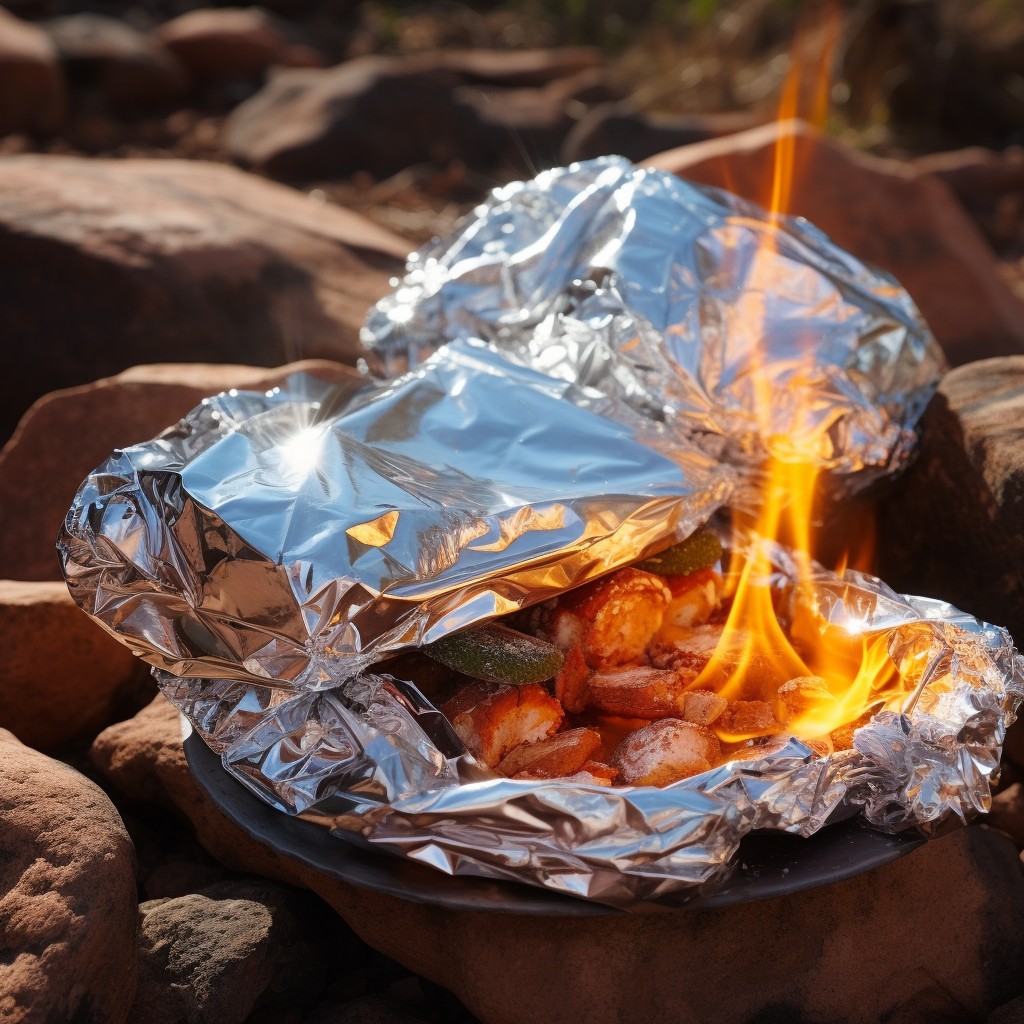
It’s perfect for making individual meals or side dishes, and it requires minimal cleanup. Simply wrap your ingredients in the foil, seal tightly, and place on hot coals or over an open flame.
One of my favorite aluminum foil campfire recipes is “hobo packs.” These are essentially individual packets filled with meat (such as ground beef or chicken), vegetables (like potatoes, carrots, onions), seasonings (garlic powder, salt & pepper) that you can customize to your liking. Seal the packet tightly by folding up all four sides of the aluminum foil so that no juices escape while cooking.
Place these hobo packs directly onto hot coals near a fire pit using tongs to avoid burning yourself. Cook them for about 20-30 minutes until everything inside has cooked through evenly.
The best part? You can eat right out of the packet! No plates needed – just be careful not to burn yourself on any remaining steam when opening it up!.
So next time you’re camping with friends or family around a cozy fire pit at nightfall looking at stars above; try this easy-to-make recipe using only some basic ingredients wrapped in aluminium foils which will make everyone happy without much hassle!.
FAQ
What can be used instead of a Dutch oven?
Instead of a Dutch oven, one can use a deep oven-proof skillet, an oven-proof soup pot, or any heavy deep pot if the recipe does not require oven use.
What can I use instead of a Dutch oven to bake bread?
You can use an oven-safe 5 or 6 quart saucepan or stock pot as an alternative to a Dutch oven for baking bread.
Can I use a regular oven instead of a Dutch oven?
Yes, you can use a regular oven instead of a Dutch oven, as both cast iron enamel and traditional seasoned cast-iron Dutch ovens can achieve the same delicious outcome in a conventional oven.
Can you use a roasting pan instead of a Dutch oven?
Yes, a roasting pan can be used as a substitute for a Dutch oven if you have a heavy and fitting lid, but it is not suitable for baking since it is designed for browning and simmering.
What are some common household items that can serve as a Dutch oven substitute for slow-cooking recipes?
Some common Dutch oven substitutes for slow-cooking recipes include a heavy-bottomed pot with a tight-fitting lid, a slow cooker, or a pressure cooker.
How do I adapt a recipe that requires a Dutch oven when using an alternative cooking vessel?
To adapt a recipe that requires a Dutch oven when using an alternative cooking vessel, choose a heavy pot with a tight-fitting lid and ensure even heat distribution for a similar cooking experience.
Can a slow cooker or pressure cooker be used as an alternative to a Dutch oven, and how do I adjust the cooking process accordingly?
Yes, a slow cooker or pressure cooker can be used as an alternative to a Dutch oven; adjust the cooking process by increasing or reducing the cooking time respectively and modifying the temperature settings as needed.
Recap
Liked this article? Here's what you can read next:

